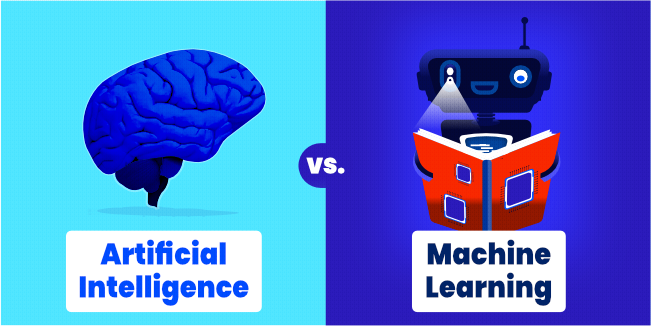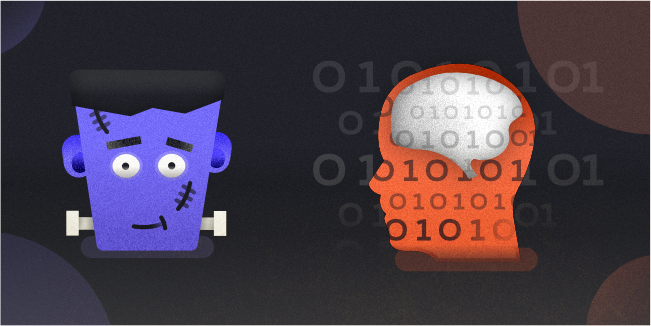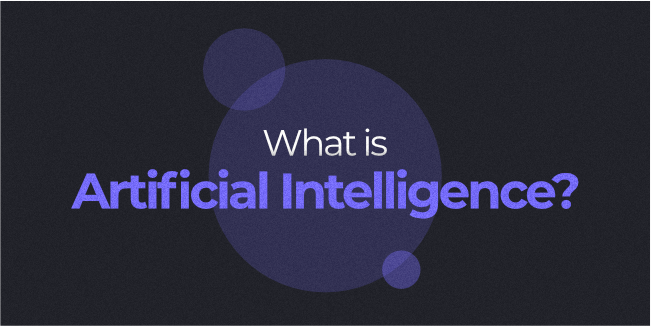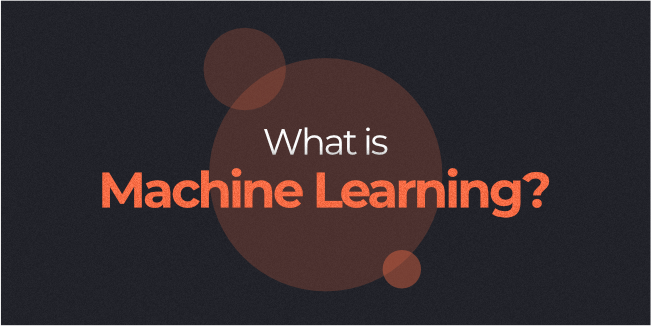Difference between Artificial Intelligence and Machine Learning

Artificial Intelligence is a difficult term to define, coined in 1956 by the American computer scientist John McCarthy. Today, it should be understood as a multidisciplinary field of engineering, which includes many sub-domains: robotics, neural networks, machine learning, A-Life (artificial life), and fuzzy logic. It makes AI a field of research very broad. It includes computer science, neurocognitive science, biology, systems and organization theory, philosophy, and neuropsychology.
Simulation is no longer an appropriate term due to the recent development of AI, going well beyond "pretending that AI can do something." In practice, AI means creating models of intelligent behavior and building programs that can recreate. Such programs include logical/rational reasoning and theorem proving analysis and generation of natural language processing and decision-making in the absence of all necessary data.
AI can be defined as a branch of science dealing with solving problems that are not algorithmized, that is, difficult to be presented and solved algorithmically, at least with the use of these simplest algorithms. In this sense, AI is a superstructure over the algorithm itself, i.e., the oldest part of computer science.
Artificial Intelligence is a method for programming a machine to simulate human intelligence. Machine Learning is one of the many forms of Artificial Intelligence, which allows a machine to learn from experience without being explicitly programmed. The objective of AI is to create an intelligent computing system that can solve complicated issues in the same way that people do. Machine Learning and deep learning are the two main subsets of AI. Deep learning is the main subset of Machine Learning. AI has an extensive range of scope. Machine Learning has a limited scope. AI is working to create an intelligent system that can perform various complex tasks. Machine Learning is working to develop machines that can perform only those specific tasks.
The history of AI and machine learning

Since antiquity, humanity has had visions of creating AI (at least partially self-behaving). In Greek mythology, Talos was a giant automaton made of bronze to protect Europe (the mother of the king of Crete) from pirates. Talos cruised the island's shores three times a day and had human habits, e.g., taking a break to rest. An example in the modern world is the monstrosity in the novel by Mary Shelley Frankenstein.
At the turn of the 19th and 20th centuries, Ada Augusta Lovelace (mathematician, daughter of Lord Byron) and Charles Babbage (mathematician) invented the concept of the programmable machine, which became the prototype of the modern computer. With Lovelace's support (she wrote a lot about the machine), Babbage created his computer for 20 years. Despite numerous iterations, nothing came of it. Instead, he prepared a diagram, the first plan for building a computer. The implementation of this plan was beyond the capabilities of the then technology, but from an engineering point of view, the design was correct. Today it can be found at the Museum of Technology in London in the guise of the Differential Machine Model 2.
The return to the concept came as the West looked for a weapon against Hitler. The AI solution was initially strongly related to defense. And during the Second World War, it gained momentum. It is where Alan Turing shows up.
Alan Turing defined what Artificial Intelligence should do and how to operate. During World War II, he was hired by English intelligence as a cryptologist to solve the German Enigma. In his theory of computation, he suggested that a machine, by shuffling as simple symbols as "0" and "1", could simulate any possible act of mathematical deduction. This knowledge - that digital computers can simulate any process of formal reasoning - is known today as the Church-Turing thesis. Along with simultaneous discoveries in neuroscience, information theory, and cybernetics, it led Turing and other scientists to consider building an electronic brain. But he was the first in the world to create machines that would be named after him - devices that could solve various logical problems. The first machines solved a separate task. Then he universalized them and created a universal machine, i.e., one that could solve multiple theoretical operations without significant problems. As a result, his work led to the development of a modern computer.
In 1956, mathematicians, physicists, information theorists, practitioners, and engineers interested in information theory met at the famous conference at Dartmouth College in the USA. The participants were, among others, John McCarthy (MIT), Marvin Minsky (MIT), and Arthur Samuel (IBM). They and their students developed programs that learned the strategy of checkers and supposedly played better than the average person. In the mid-1960s, research in the US was financed by the Department of Defense, but laboratories operated worldwide. It was then that a computer with the ENIAC operating system was created. Then the concept of the computer was developed, and with it, the name "Artificial Intelligence" began to spread. In the 1970s and early 1980s, projects such as Cog and CIC were created to help create a classic Artificial Intelligence, i.e., a system for manipulating defined symbols and their representations.
In a conversation about AI, it is difficult to ignore the topic of the electric calculator, which was invented as a handy tool for simple arithmetic. The first electronic semiconductor calculator saw the light of day in the early 1960s; its tasks became more and more advanced with time. With the release of the first microprocessor by Intel - the 4004. In the 1980s, calculators accounted for about 41% of the world's computing power, but this indicator dropped to 0.05% as computers appeared.
In the 1970s and 1980s, scientists redefined the field following the strictly symbolic AI (old-fashioned AI) paradigm. Scientists began to reflect on more sub-symbolic paradigms, as evidenced by mimicking biological mechanisms in the development of AI. The fascination with biology resulted in the Perceptron, a model of a simple neural network operating on a single layer of neurons.
The next few years (1987-1993) were called "Artificial Intelligence Winter." The US Congress and the British government cut funding for research due to difficulties.
In the 1990s, Arpanet, a military guarded project, became the Internet, and other expert systems, which also operated mainly in the military, began to be used in business and medical diagnostics. It is also when Machine Learning starts to develop, based on a deep borrowing from statistics. The global set of data that has been released since the 1990s is still growing because we all create data while being on the Internet. Using statistical methods, scientists then start to think about other ways of AI development. They wonder: maybe we would go in the direction of processes that we would not fully supervise but would only pass the input information to the machine, and it would come up with something on its own? It is how the various Machine Learning methodologies are evolving in the statistical AI model. Today, instead of giving simple commands: "order the set," we wait for the machine to find some analysis paths by itself. It can carry out such processes with the help of computing power and many neural layers. This information is processed in a very comprehensive way at various levels of abstraction.
What is Artificial Intelligence?

Artificial Intelligence is the ability of a computer to perform intelligent actions. Today, many people are familiar with some personal assistants on mobile devices or voice recognition systems, which are based on Artificial Intelligence algorithms. Artificial Intelligence works by collecting relevant data points about some object and creating a model representing relationships between them. Then it analyses this model using one of several possible algorithms, which usually simulate the behavior of neurons in the human brain. Finally, having received the results of this computational process as input data, it can develop an appropriate response or take further steps towards achieving its goals.
Suppose we try to give a more precise definition of Artificial Intelligence. In that case, there must be at least two parties involved: an actor who acts based on information received and an object upon which action is taken. Secondly, both actors should be able to act rationally or purposefully, i.e., they know what they need to achieve and how to achieve it.
The above definition explains the purpose of Artificial Intelligence: it creates a model of behavior that enables it to mimic human actions in any situation (including interactions).
How Artificial Intelligence (AI) Works?
Reverse-engineering human traits and capabilities in a machine and then leveraging its computational power to exceed what we can do is the process of building an AI system.
To fully comprehend How Artificial Intelligence Works, you must understand how many varied sub-fields of Artificial Intelligence operate and how they might be used in the various sectors.
Machine Learning
ML teaches computers to draw conclusions and make decisions based on experience. It finds patterns, analyzes previous data to infer the significance of these data points, and draws a possible conclusion based only on statistics. This automation for reaching judgments by crunching numbers saves businesses time and aids them in making better choices.
Deep Learning
The term "deep learning" refers to a type of Machine Learning. It teaches a computer to analyze data through layers to identify, infer, and predict outcomes.
Neural Networks
The fundamental idea behind Neural Networks is to mimic how the human brain works. A Neural Network is a computer system designed to work by classifying information in the same way a human brain does.
Natural Language Processing
NLP is the study of interpreting, understanding, and interpreting a language by a machine. When a computer understands what the user wants to say, it responds appropriately.
Computer Vision
Computer vision algorithms aim to interpret an image by breaking it down into parts and analyzing them. It aids the machine in determining whether or not a particular set of photographs is suitable for output based on experience. Computer vision uses massive data sets to train computer systems to interpret visual images.
Cognitive Computing
A cognitive computing algorithm is designed to mimic a human brain by analyzing text, speech, images, and objects the same way that a person would.
Where is Artificial Intelligence (AI) Used?
AI provides insights into user behavior and offers recommendations based on the data. For example, Google's predictive search algorithm forecasts what a person will type text in the search bar found on previous user information. Netflix leverages past user information to suggest what film a customer may want to watch next, ensuring that the platform is engaged and increasing viewing time. Significant corporations employ Artificial Intelligence to make an end user's life easier. The applications of Artificial Intelligence would be classified as data processing, which includes the following:
- Within data, and optimizing the search to provide the most relevant results
- If-then logic chains, which may be used to run a sequence of commands depending on variables
- Identifying significant patterns in a large data set for creative insights
- Applied probabilistic models are being used to forecast future events.
A few Artificial Intelligence examples:
- The English language has over a million different words, with hundreds of billions of queries used to build a language model. It's based on speech recognition.
- 10 million YouTube videos are used as a Google Brain Deep Learning training set. The breakthrough era for neural networks and deep learning funding had arrived when the neural network was able to identify a cat without being informed what a cat is.
- Lee Sedol, a world champion Go player, is defeated by Google DeepMind's AlphaGo. The ancient Chinese board game's complexity was seen as a significant barrier to overcome in AI.
- Sophia, the first "robot citizen," is a humanoid robot built by Hanson Robotics that can recognize faces, converse, and emotively display emotions.
- During the early phases of the SARS-CoV-2 epidemic, Baidu releases its LinearFold AI algorithm to scientific and medical teams working to develop a vaccine. The computer program can predict the virus's RNA sequence in just 27 seconds, 120 times faster than current techniques.
- Microsoft wants to apply as many cancer treatment records as possible in the Hanover project and help predict which drug combinations will be most effective for a given patient.
What is Machine Learning?

Machine Learning (ML) has data as its input. It then extracts features from that data and runs them through one or several algorithms, which usually simulate the behavior of neurons in the human brain like those used in AI. The essential difference between ML and AI is that while many current ML systems are highly specialized and task-specific, general AI is still the goal of many researchers in the field.
How Does Machine Learning Work?
The process of teaching computers how to learn is called Machine Learning. Google's RankBrain is an example of a Machine Learning algorithm. This machine-learning model can generate accurate results or give predictions based on data. Machine Learning works on an algorithm that learns on its own using historical data. This Machine Learning technique makes search results more accurate, suggesting what users might have intended when entering specific search queries. If you type in "What is the best way to thaw frozen meat?" your browser will offer the correct response before you even hit "enter." Each time RankBrain improves, the correct answer becomes the most popular one for that particular query.
Key differences between Artificial Intelligence (AI) and Machine Learning (ML)

The distinction between Machine Learning and Artificial Intelligence is not always clear. Many people use the terms interchangeably or define them in different ways. However, some critical differences between the two can help to clarify their meanings.
Machine Learning (ML) focuses on developing systems that can learn from data without being explicitly programmed. It involves algorithms that can automatically improve their performance as they "learn" from data, adapting to changes in their environment or input.
On the other hand, Artificial Intelligence (AI) refers to a broader range of capabilities, including systems that can reason, plan, understand natural language, perceive, learn, and act. A more narrow definition of AI is the ability of a machine to perform tasks that humans can accomplish through intelligent thinking.
Both are sub-fields of computer science, but they are fundamentally different in their goals. Whereas ML goals include learning from data without explicitly programming, AI goals include reasoning with minimal human input. They share some standard technologies (e.g., neural networks) but also have key differences, including how they're applied and within what context:
- Machine Learning focuses on making sense of complex data (unstructured or partially structured), such as text, images, audio, and video. At the same time, Artificial Intelligence seeks to mimic human intelligence by performing complex tasks requiring judgment and common sense, such as understanding natural language and recognizing objects in pictures.
- Another key difference is that Machine Learning typically operates within pre-defined parameters or models. At the same time, Artificial Intelligence can learn on its own by tweaking algorithms and improving its performance over time (this is commonly referred to as "Machine Learning").
- Machine Learning is a subset of AI, which has been around for much longer - dating back to the 1950s. ML has seen a resurgence in recent years due to the availability of big data and advances in algorithms and computing power. In contrast, AI was somewhat eclipsed by ML for a period but is now making a comeback because of concerns about data bias in Machine Learning.
- One of the key differences between Machine Learning and Artificial Intelligence is that Machine Learning is based on making decisions purely through logic and reason. At the same time, Artificial Intelligence can consider all available data (including emotional/instinctual responses).
- Machine Learning is mainly used for tasks such as pattern recognition and classification. In contrast, Artificial Intelligence can be used for more complex tasks such as natural language processing and machine translation. Machine Learning is mainly based on data that has been predetermined, whereas Artificial Intelligence can learn from new data that is introduced.
- Machine Learning algorithms are static, while Artificial Intelligence algorithms are dynamic.
It's important to note the difference between "feeling" something and assessing it logically. For example, you might feel that a particular decision is the best one for you, but it may not be the most optimal from a logical standpoint. That's where Machine Learning comes in - it can take all of the data it has access to and learn from it, including any emotional or instinctual responses, to make better decisions.